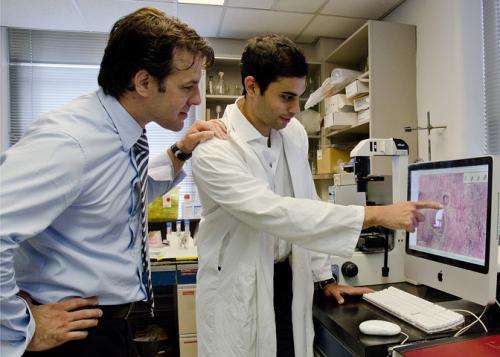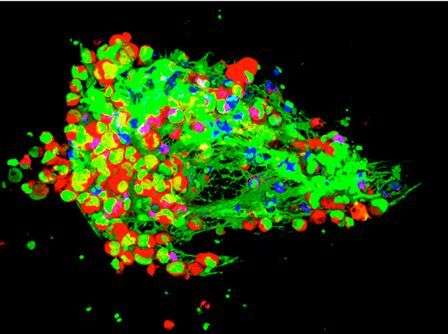How the body aids and abets the spread of cancer

The very system that is meant to protect the body from invasion may be a traitor. These new findings of a study, led by investigators at the Research Institute of the McGill University Health Centre (RI-MUHC), reveal that infection-fighting white blood cells play a role in activating cancer cells and facilitating their spread to secondary tumours. This research, published today in the Journal of Clinical Investigation has significant implications for both the diagnosis and treatment of cancer.
"We are the first to identify this entirely new way that cancer spreads," says senior author Dr. Lorenzo Ferri, MUHC director of the Division of Thoracic Surgery and the Upper Gastrointestinal (GI) Cancer Program. "What's equally exciting is medications already exist that are being used for other non-cancer diseases, which may prevent this mechanism of cancer spread or metastasis." According to Dr. Ferri, the next steps are to validate if these medicines will work for the prevention and treatment of cancer metastasis, and then to determine the optimal timing and dosing.
Linking infection, inflammation and metastasis
"Our first clue of this association was from our previous research, which showed that severe infection in cancer patients after surgery results in a higher chance that patients will have the cancer return in the form of cancer metastasis," says Dr. Ferri who is also an Associate Member of the Rosalind and Morris Goodman Cancer Research Centre and Associate Professor in the Department of Oncology at McGill University. "This led us to investigate the cellular players in the infection, notably neutrophils, the first and most numerous of the white blood cells that are used by the immune system fight off infections."
Dr. Ferri and his colleagues from McGill University and the University of Calgary used both cultured cells and mouse models of cancer to show that there is a relationship between infection, a white blood cell response (inflammation) and metastasis. A web-like network called Neutrophils Extracellular Traps (NETs), is produced by white blood cells (neutrophils) in response to an infection and this normally traps and kills invading pathogens, such as bacteria.

"We demonstrated that in the case of infected animals with cancer, the neutrophil web (NETs) also trapped circulating cancer cells," adds Dr. Jonathan Cools-Lartigue, first author of the study, and a PhD student from the LD MacLean Surgical Research Laboratories at McGill University. "Instead of killing the cancer cells, these webs activated the cancer cells and made them more likely to develop secondary tumours, or metastasis."
No web equals better outcome
The researchers went one step further and showed that breaking down the neutrophil web is achievable by using certain medication. Furthermore, in mice with cancer, markedly less tumour growth and metastasis occurred after the medication was administered. This finding was true for a number of different cancer types, suggesting that neutrophil webs may be a common pathway involved in the spreading of many cancers.
"Our study reflects a major change in how we think about cancer progression," says Dr. Ferri. "And, more importantly, how we can treat it."
More information: Neutrophil extracellular traps sequester circulating tumor cells and promote metastasis, J Clin Invest. doi:10.1172/JCI67484


















